Wall cracks are as common as morning coffee, and usually less scary than they look. Most homeowners spot a crack and immediately imagine the worst.
But the truth is not every crack signals a disaster. Some are simply your home’s way of settling in, like an old chair finding its comfortable spot.
In this guide, I’ll break down everything you need to know about wall cracks:
- Types of cracks
- What causes them
- Warning signs to watch
- Prevention tips
My mission? To help you understand, assess, and solve wall crack mysteries.
I’ll walk you through each step with clear, practical advice. If you’re a new homeowner or have lived in your space for years, this guide will give you the confidence to tackle wall cracks head-on.
Why Wall Cracks Matter?
I’ve learned that wall cracks are like warning signs; ignore them at your own risk. These small cracks might seem harmless, but they often signal bigger problems with your home.
When I first noticed a crack in my living room, I ignored it, thinking it was no big deal. That was a mistake.
Cracks can point to serious structural issues that could lead to costly repairs. A small problem now can turn into a big one later, and catching it early can save you money and stress.
Not all cracks are the same; some are cosmetic, while others are a sign of deeper issues. Learning the difference can help protect your home. Keep an eye on those cracks, they’re trying to tell you something.
What Are the Different Types of Wall Cracks?
Let me break down the most common types you might spot in your home, helping you understand what’s happening behind those walls.
1. Hairline Cracks
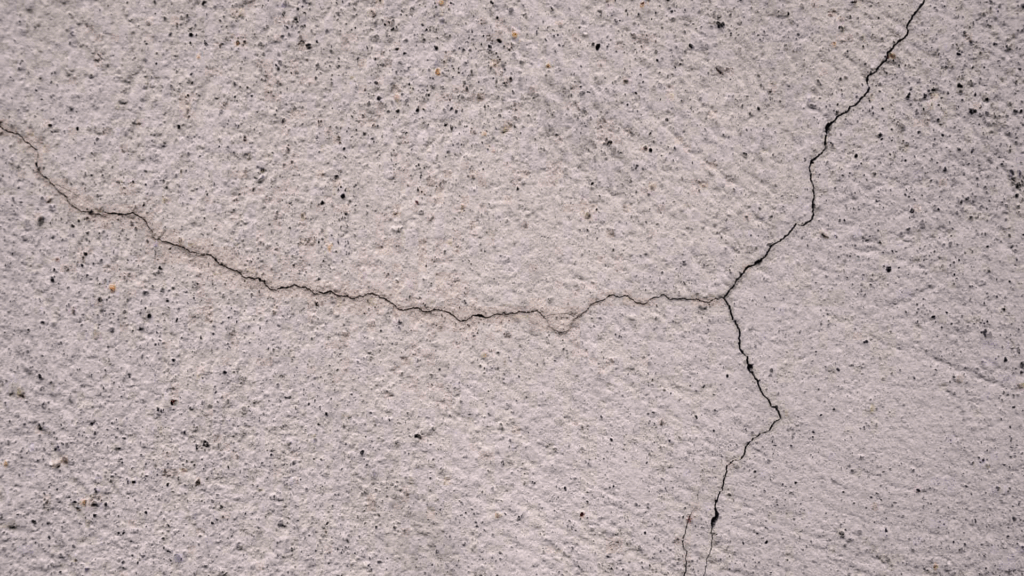
Hairline cracks are tiny, barely wider than a human hair. Think of them like your wall’s stretch marks, caused by your home shifting and adjusting, much like your skin does.
Most of these cracks appear due to natural settling, small temperature changes, or minor humidity shifts. They’re usually cosmetic and don’t indicate any serious structural problems.
How to fix:
- Clean the crack area thoroughly
- Use paintable caulk to fill small gaps
- Apply a thin layer of spackling compound
- Sand the area smoothly
- Touch up with matching wall paint
- Monitor for any unexpected changes
2. Vertical Cracks
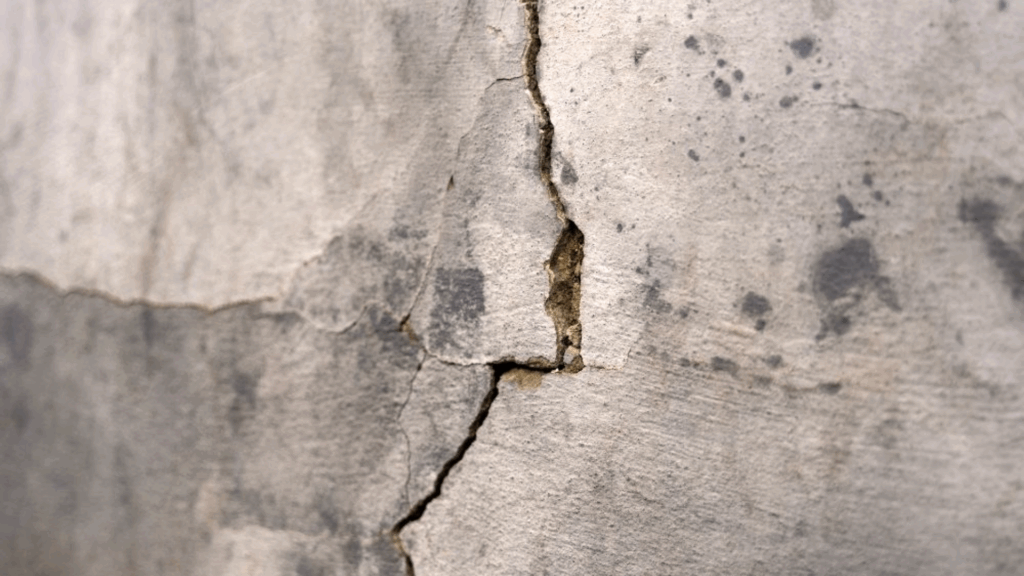
Vertical cracks run straight up and down, like a line drawn on a page. These cracks are usually a sign that your house is settling naturally, similar to how new shoes need to be broken in.
They often appear in newer homes or after construction as the building adjusts to its environment and finds its natural position.
How to fix:
- Measure the crack’s width carefully
- Clean the crack completely
- Use fiberglass mesh tape for additional support
- Apply multiple thin layers of joint compound
- Sand between each layer for a smooth finish
- Paint to match the wall color
- Regularly check for any ongoing movement
3. Horizontal Cracks
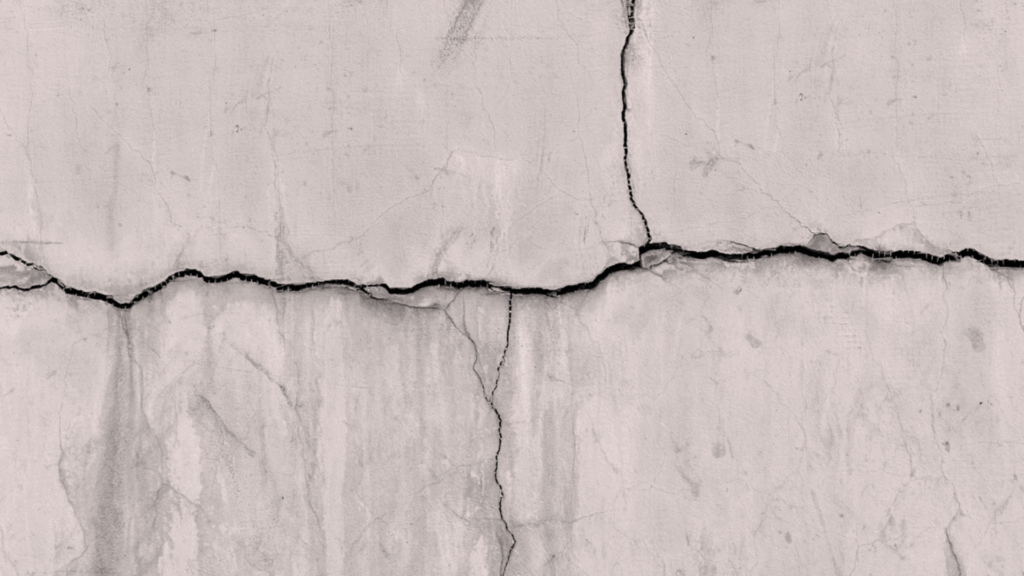
Horizontal cracks can be a sign of more serious issues.
Unlike vertical cracks, which are typically less concerning, horizontal cracks may indicate foundation problems, excessive soil pressure, or structural stress.
These aren’t just cosmetic; they could be warning signs of deeper issues that need attention.
How to fix:
- Do NOT attempt DIY repairs
- Call a professional structural engineer
- Get a comprehensive home foundation assessment
- Investigate potential water drainage issues
- Consider professional wall reinforcement
- Address the root cause before cosmetic repairs
- Obtain multiple expert opinions
4. Diagonal Cracks
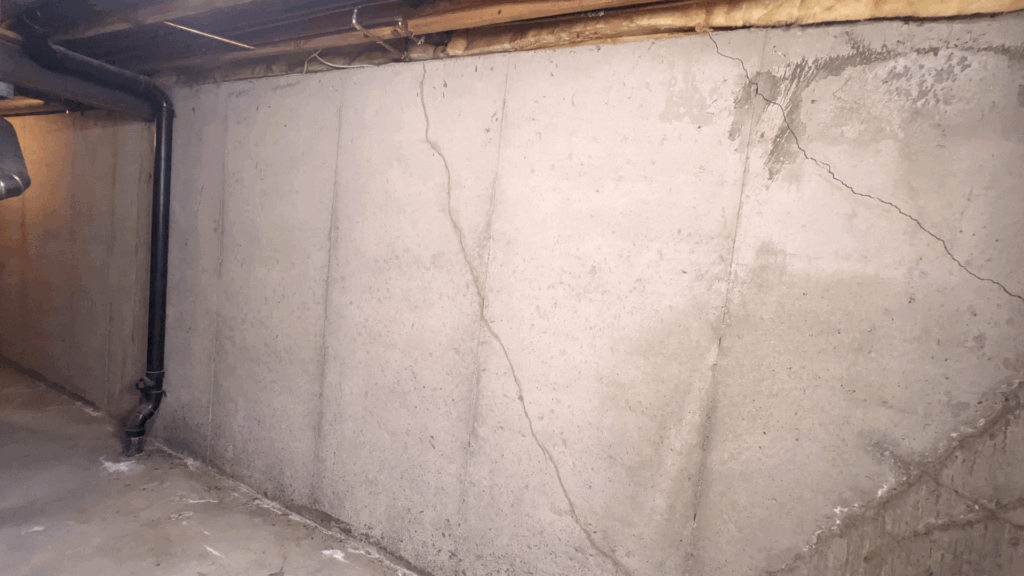
Diagonal cracks slice across walls at various angles, often resembling lightning bolts. These angular intruders frequently point to foundation movement or shifting ground.
They might appear after earthquakes, during significant soil erosion, or when your home’s foundation experiences uneven settling.
The angle and width can tell a story about what’s happening beneath the surface.
How to fix:
- Measure crack width and angle precisely
- Document with clear photographs
- Check for any visible foundation issues
- Consult a structural engineering professional
- Investigate potential ground drainage problems
- Consider soil stabilization techniques
- Repair only after understanding the root cause
5. Stair-Step Cracks in Bricks
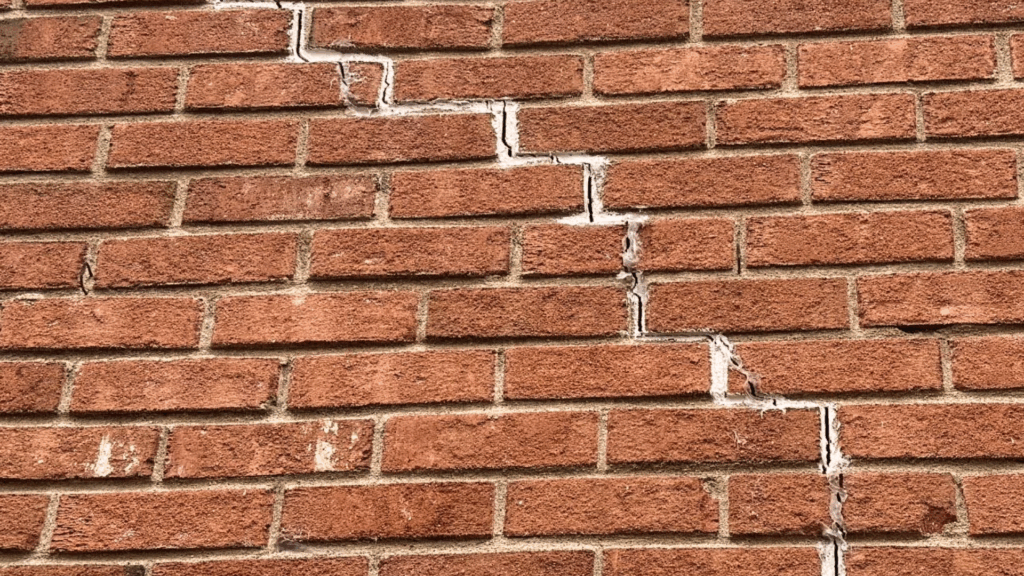
These zigzag patterns through brick walls look like a staircase climbing sideways. Each step tells a tale of potential foundation stress.
They often appear in brick homes and can indicate serious structural shifts, especially in older buildings. The crack pattern follows mortar lines, creating a distinctive stair-like appearance.
How to fix:
- Do not ignore these cracks
- Hire a masonry specialist
- Conduct a thorough foundation inspection
- Check for potential water damage
- Investigate soil conditions around the foundation
- Consider professional wall reinforcement
- Address drainage and water issues
What Causes Wall Cracks?
Walls don’t crack for no reason. Each crack tells a story, and understanding these signs can help you avoid costly repairs and headaches down the road.
1. Foundation Settling
Your home sits on soil that’s constantly moving, breathing, and changing. Imagine the ground as a living, shifting blanket.
New homes often experience more settling in the first few years. Clay soils expand and contract like an accordion, pushing and pulling your foundation.
This natural movement creates stress points that show up as cracks in your walls.
2. Water Damage
Water is a wall’s worst enemy. Leaky pipes, poor drainage, and moisture are like slow-motion wrecking balls. When water seeps into foundation or wall materials, it weakens structural integrity.
Imagine tiny water droplets playing a destructive game of tag inside your walls, causing wood to rot, metal to rust, and materials to break down.
3. Temperature and Humidity
Walls expand and contract with temperature changes. Your home breathes like a living organism. In summer, materials stretch. In winter, they shrink.
This constant dance creates tension that can result in hairline cracks. Humidity adds another layer of complexity, causing wood and drywall to swell and contract.
4. Poor Workmanship
Not all construction is created equal. Some walls are built like a house of cards. Cheap materials, rushed work, or inexperienced builders can create structural weaknesses.
Improper mixing of concrete, using low-quality drywall, or skipping critical reinforcement steps can lead to premature cracking.
5. Building Age
Older buildings tell stories through their cracks. Each year adds a new chapter to your home’s history.
Materials degrade, support structures weaken, and the original construction methods become outdated. What was solid 50 years ago might now be showing signs of wear and stress.
6. External Vibrations
Construction nearby, heavy traffic, or even underground train lines can cause wall cracks. Think of your home as a cup of water on a wobbly table.
Constant small vibrations can slowly work their way through your home’s structure, creating stress points that manifest as cracks.
When to Worry: Signs of Structural Problems
Not all wall cracks are emergency signals, but some are like blaring sirens demanding your attention. I’ve learned to read these warning signs like a home health detective. Let me show you what truly matters.
Width Matters
When cracks grow beyond ⅛ inch, alarm bells should ring. Think of this measurement like a critical health checkpoint. Anything wider isn’t just a cosmetic issue; it’s a potential structural warning.
A crack this size means your home is experiencing serious stress. It’s like your wall is sending an urgent text message: “Help needed immediately!”
Crack Evolution
Cracks that grow, change direction, or suddenly appear are red flags. Imagine your wall as a living document constantly being rewritten.
If a crack starts small and suddenly stretches like a rubber band or changes its path, something significant is happening beneath the surface.
These dynamic cracks suggest ongoing movement that requires professional investigation.
Door and Window Drama
Sticking doors and windows are more than just annoying. They’re your home’s way of saying something’s off-kilter.
When doors don’t close smoothly or windows suddenly feel tight, it could mean your home’s frame is shifting. This misalignment often indicates foundation problems or serious structural movement.
Foundation and Ceiling Cracks
Cracks near the foundation or spreading across ceilings are serious business. These aren’t just lines, they’re potential emergency broadcasts.
Foundation cracks can signal ground movement, water damage, or significant structural stress. Ceiling cracks might indicate roof problems or serious house settling issues that need immediate professional assessment.
Weather-Triggered Cracks
New cracks appearing after extreme weather events are warning signs. Your home reacts to environmental changes like a sensitive organism.
Heavy rain, drought, or significant temperature shifts can cause ground movement. If you notice fresh cracks after these events, it’s time to call in an expert.
Floor and Baseboard Mysteries
Sloping floors or gaps in baseboards are silent screams for help. Think of your floor like a landscape with hidden geological shifts. Uneven surfaces suggest serious foundation problems.
When floors feel like they’re tilting or baseboards create unexpected spaces, your home is literally telling you something is wrong.
Signs to Watch for Before Cracks Appear Again
Fixing a crack isn’t the end; it’s more like hitting pause. I’ve learned that walls have memory and will remind you if the underlying issue isn’t fully addressed.
1. Hairline Crack Comebacks
Think of these cracks like stubborn weeds in your garden. They’re not just reappearing by chance. Repeated cracks in identical locations suggest the original problem wasn’t fully addressed.
Something underneath is still moving, shifting, or causing stress to your walls.
2. Seasonal Crack Patterns
Your home breathes and shifts with temperature changes, much like your skin reacts to different weather.
If cracks consistently reappear during specific seasons, like summer heat or winter cold, it indicates ongoing structural stress that needs professional investigation.
3. Paint and Moisture Mysteries
Bubbling paint or damp patches near previous crack locations are warning signs. Moisture can mean hidden water damage, potential mold growth, or continuing foundation problems.
When paint starts looking sick or walls feel damp, something’s brewing beneath the surface.
4. Floor and Ceiling Movements
Floor separation or ceiling sagging might seem subtle, but they speak volumes. Uneven floors or drooping ceilings suggest ongoing foundation issues or structural shifts.
These aren’t just visual quirks; they’re serious indicators of potential long-term problems.
5. Persistent Moisture
Water is a master of disguise, always finding new paths. Persistent moisture can mean hidden leaks, poor drainage, or ongoing water infiltration.
These conditions weaken your home’s structure and can lead to more significant damage if left unchecked.
Effective Tips to Prevent Future Wall Cracks

Wall cracks are like uninvited guests; once they appear, you want to make sure they don’t come back. I’ve gathered practical strategies to help keep your walls strong and crack-free.
1. Drainage
Think of good drainage like an umbrella for your foundation. Ensure your yard slopes away from the house.
Clean gutters regularly, extend downspouts at least 5 feet from the foundation, and create a barrier that keeps water from pooling near your home’s base.
2. Plumbing Patrol
Hidden leaks are silent destroyers. Imagine water as a ninja slowly weakening your walls. Check under sinks, around toilets, and near water pipes regularly.
Fix even the tiniest drips immediately. A small leak today can become a massive problem tomorrow. Use your ears and eyes, listen for unusual sounds, and look for any moisture signs.
3. Material Matters
When patching walls, don’t skimp on materials. Cheap fixes are like band-aids on a broken leg. Invest in high-quality spackling compounds, joint compounds, and paint.
Professional-grade materials last longer and provide better protection. Think of it as buying insurance for your walls.
4. Humidity Control
Indoor humidity is like a wall’s mood ring. Too wet or too dry, and your walls get stressed. Keep indoor humidity between 30% and 50%.
Use dehumidifiers in damp areas like basements. In dry regions, consider a humidifier. This balance prevents materials from expanding and contracting too much.
5. Annual Foundation Check-ups
Treat your home’s foundation like your personal health. Schedule yearly inspections like you would a doctor’s appointment. Look for signs of settling, check for small cracks, and address issues before they grow.
A professional can spot potential problems you might miss.
6. Strategic Reinforcement
Long walls need breathing room. Install expansion joints like safety valves for your home. These special joints allow walls to move slightly without cracking.
They’re especially crucial in areas with extreme temperature changes or significant ground movement.
Conclusion
Wall cracks aren’t the end of the world, but they’re not something to ignore either.
Think of them as your home’s way of talking to you. Some whisper, some shout, but each crack tells a story. You’ve got the knowledge now to understand what they’re saying.
Remember, not every crack means disaster. Small steps can prevent big problems. Trust your instincts. If something feels off, it probably is.
Don’t be afraid to ask for help. A quick professional inspection can save you thousands and give you peace of mind. Your home is more than just walls; it’s your safe space.
Listen carefully, act wisely, and stay proactive. You’ve got this!

